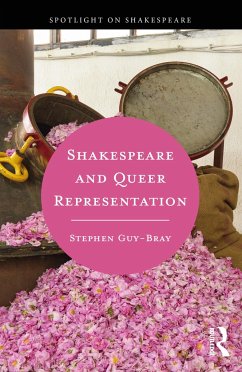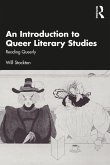In this engaging and accessible guidebook, Stephen Guy-Bray uses queer theory to argue that in many of Shakespeare's works representation itself becomes queer.
Shakespeare often uses representation, not just as a lens through which to tell a story, but as a textual tool in itself. Shakespeare and Queer Representation includes a thorough introduction that discusses how we can define queer representation, with each chapter developing these theories to examine works that span the entire career of Shakespeare, including his sonnets, Venus and Adonis, The Rape of Lucrece, King John, Macbeth, and Cymbeline. The book highlights the extent to which Shakespeare's works can be seen to anticipate, and even to extend, many of the insights of the latest developments in queer theory.
This thought-provoking and evocative book is an essential guide for students studying Shakespeare and Renaissance literature, gender studies, and queer literary theory.
Shakespeare often uses representation, not just as a lens through which to tell a story, but as a textual tool in itself. Shakespeare and Queer Representation includes a thorough introduction that discusses how we can define queer representation, with each chapter developing these theories to examine works that span the entire career of Shakespeare, including his sonnets, Venus and Adonis, The Rape of Lucrece, King John, Macbeth, and Cymbeline. The book highlights the extent to which Shakespeare's works can be seen to anticipate, and even to extend, many of the insights of the latest developments in queer theory.
This thought-provoking and evocative book is an essential guide for students studying Shakespeare and Renaissance literature, gender studies, and queer literary theory.
'Building on a rich body of recent criticism that finds in Shakespeare's oeuvre not only a passive object ripe for queer analysis but also an active model of queer theory itself, Stephen Guy-Bray's insightful Shakespeare and Queer Representation argues that artistic representation plays a disorienting, queer role in Shakespearean theater and poetry, exceeding its task of depicting some external or "natural" object in service of narrative progression.' Christopher Yates, Shakespeare Quarterly








